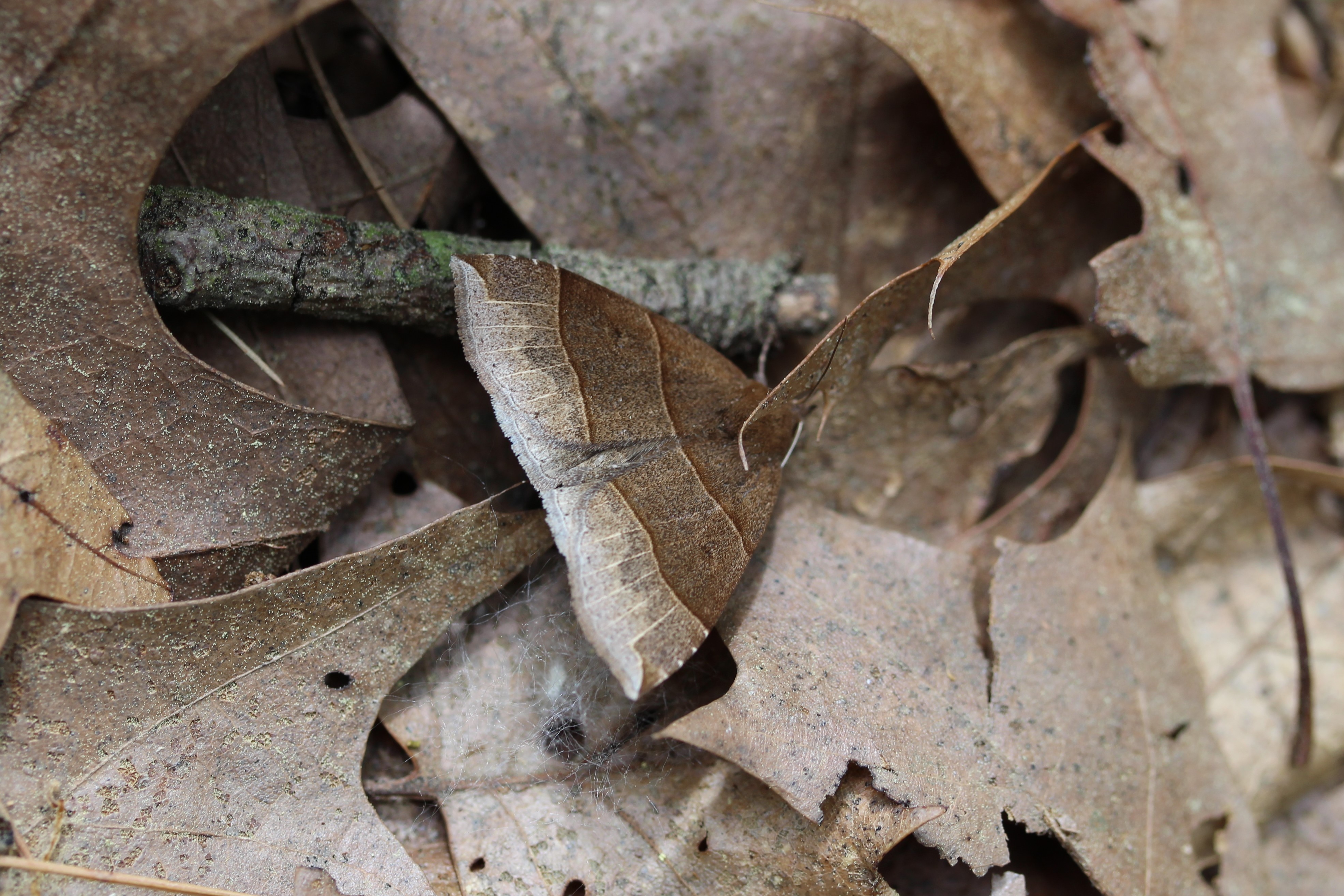
Subject: Maple Looper Moth (Parallelia bistriaris)
Location: Turkey Point Provincial Park.
Date: June 2018.
The Story behind the Shot: While hiking down a trail at Turkey Point Provincial Park, my wife somehow spotted this moth among the leaves which it matched so closely. I was overjoyed to get such a close-up shot of an amazingly camouflaged insect.
The Story behind the Species:
This moth could be the poster-child for camouflage. Such an elegant example of hiding-in-plain-sight. Positioned among fallen leaves which it matches in tone and general shape, this moth is incredibly hard to spot! To hide itself even more, the Maple Looper Moth positions itself head down, thus hiding its least leaf-like feature and accentuating the lighter edge of its hindwings (Keiper 1969).
The larvae of this superbly secretive moth are also camouflaged, resembling twigs rather than leaves.

The larvae, unsurprisingly, feed on Maple leaves (Crumb 1956), but bugguide.net lists Birch and Walnut as food plants as well (https://bugguide.net/node/view/3356).
I’m glad to have found and captured a photograph of this mysterious moth. A beautiful secret of the forest floor.
References:
Crumb, Samuel. 1956. “The Larvae of the Phalaenidae”. United States Department of Agriculture, Technical Bulletin # 1135. (Viewable in full here: https://books.google.ca/books?id=3jQlAQAAMAAJ&pg=PA1&dq=Phalaenidae&source=gbs_toc_r&redir_esc=y&hl=en#v=onepage&q&f=false)
Keiper, Ronald. 1969. “Behavioral Adaptations of Cryptic Moths IV. Preliminary Studies on Species Resembling Dead Leaves”. Journal of The Lepidopterist’s Society 23: 4: 205-210.
For other posts in this series, see:
–My Top 20 Nature Photos of 2013-2020
–1. The Pale-Painted Sand Wasp (Bembix pallidipicta)
–2. Moose (Alces alces) Family
–3. Canada Jay (Perisoreus canadensis)
–4. Common Five-Lined Skink (Plestiodon fasciatus)
–5. Robber Fly Hunting Queen Ant
–6. Spring Peeper (Pseudacris crucifer)
–7. Leafhopper (Errastunus ocellaris)
And for other posts about Butterflies and Moths, see:
–Leafhoppers, Lepidopterans and Longhorns